Best Email Tools to Try in 2025
With so many messengers available these days, it would be easy to assume that emails are a thing of the past, but the numbers prove otherwise. Not only are email tools still around, they are just as strong as they were years ago, and are even thriving. As Chris Penn once said, “Email is the most valuable piece of real estate on the internet.” And that quote still rings true.
According to recent research, the average ROI for delivered emails for every buck spent is $36 — the highest of any digital marketing channel. What’s more, with the email user base continuing to grow, and over 4.6 billion people sending emails daily, we can expect even greater engagement with email in the coming years.
Whether you’re a solopreneur, small business, or part of a full-blown marketing team, finding the right email tool can make or break your campaigns. The good news? There’s no shortage of options. The tricky part? Picking the one that ticks all the right boxes for you.
Below, we’ve rounded up 15 of the best email tools to try in 2025. We’ll walk you through their strengths, possible dealbreakers, and who they suit best. Let’s dive in!
Best Email Tools in 2025 You Should Give a Try
Before we delve into the details, let’s take a quick look at the side-by-side comparison of the top email tools in 2025. This will help you figure out what options you have and which platform meets your goals best.
| Tool | Standout Features | Shortcomings | Best For |
|---|---|---|---|
| Sender | Beginner-friendly, drag-and-drop builder, automation, analytics | Limited integrations, basic design flexibility | Small businesses, beginners |
| Omnisend | Multi-channel (email, SMS, push), eCommerce workflows | Basic reporting, slight learning curve | eCommerce brands |
| Brevo | All-in-one suite, CRM, SMS, transactional emails | Clunky UI, limited templates | Growing businesses needing email + CRM |
| Klaviyo | Data-driven segmentation, Shopify integration | Expensive, not ideal for non-eCommerce | Advanced eCommerce marketers |
| Mailchimp | User-friendly, templates, A/B testing | Price scales fast, limited automation | Small businesses, freelancers |
| ActiveCampaign | Advanced automation, CRM, dynamic content | Steep learning curve, older UI | Power users, scaling teams |
| SendX | Unlimited sends, heatmaps, budget-friendly | Few templates, fewer integrations | Budget-conscious marketers |
| Constant Contact | Event tools, real-time tracking, AI content suggestions | Basic automation, limited workflow customization | Nonprofits, event marketers |
| DRIP | Visual automation, eCommerce focus, SMS | High price, not beginner-friendly | Scaling eCommerce stores |
| HubSpot | All-in-one CRM+email, personalization, smart content builder | Pricey, overkill for small teams | Teams using HubSpot or needing CRM |
| GetResponse | Landing pages, webinars, conversion funnel builder | Dated UI, feature gating | Content marketers, educators |
| EmailOctopus | Simple builder, Amazon SES integration, affordable | Basic features, limited automation | Startups, basic needs |
| Kit | AI marketing assistant for Shopify, social/email suggestions | eCom-only, limited customization | Shopify solopreneurs |
| AWeber | Autoresponders, AMP support, high deliverability | Dated UI, basic automation | Small biz, reliability-focused |
| Beehiiv | Newsletter templates, monetization tools, referral growth tools | Limited integrations, not for general marketing | Writers, bloggers, content creators |
This was just a quick glimpse into the best email services, but remember, it’s not just functionality that matters, though it certainly should come among first on the list. What is also important – and we’d put a stress here — is to find a reliable email vendor who’s putting security in the first place.
Sender
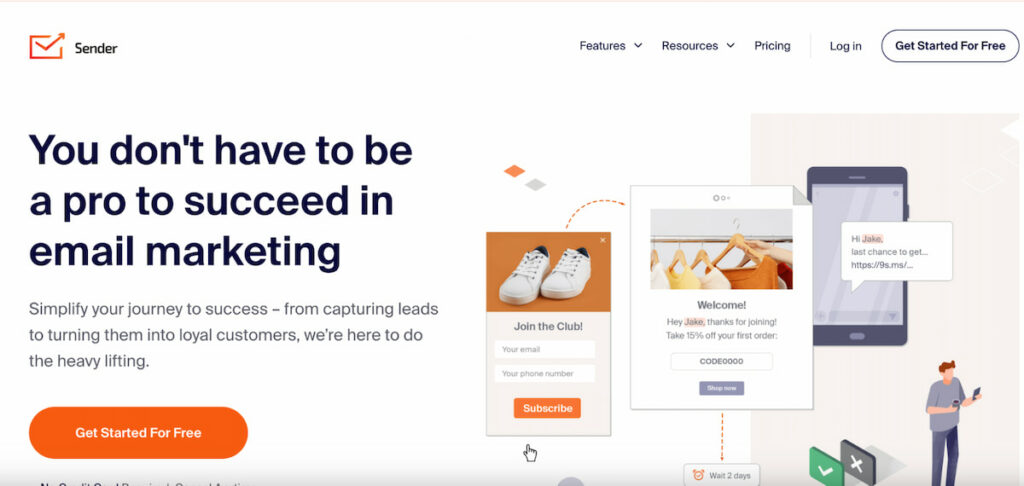
Sender is a no-fuss email marketing tool that packs a punch for small teams. It’s built for simplicity, without compromising key features like automation and reporting. The platform is intuitive, with a user-friendly interface that gets you up and running in no time. Even if you’re not a tech whiz, you’ll find Sender easy to navigate and effective for growing your list.
Standout Features
Sender is known for its simplicity without skimping on performance. It offers:
- A visual drag-and-drop email builder;
- Automation workflows for abandoned carts and welcome series;
- Advanced analytics with click maps and subscriber behavior.
Shortcomings
- Fewer integrations than some competitors;
- Limited design flexibility for advanced users.
Best for
Small businesses and beginners, looking for an easy-to-use, budget-friendly option.
Omnisend

Omnisend is an eCommerce-focused platform that brings email, SMS, and push notifications together. It’s a true multi-channel powerhouse built to drive sales. Designed specifically for online stores, it helps automate customer journeys with minimal fuss. With drag-and-drop tools and ready-made workflows, it’s a favorite among Shopify and WooCommerce users.
Standout Features
Omnisend is built with eCommerce in mind. It shines with:
- Multi-channel automation (email, SMS, push notifications);
- Easy integration with Shopify and WooCommerce;
- Pre-built workflows tailored to online stores.
Shortcomings
- Reporting tools could be more in-depth;
- Learning curve for automation setup.
Best for
E-commerce brands, looking to streamline marketing in one place.
Brevo
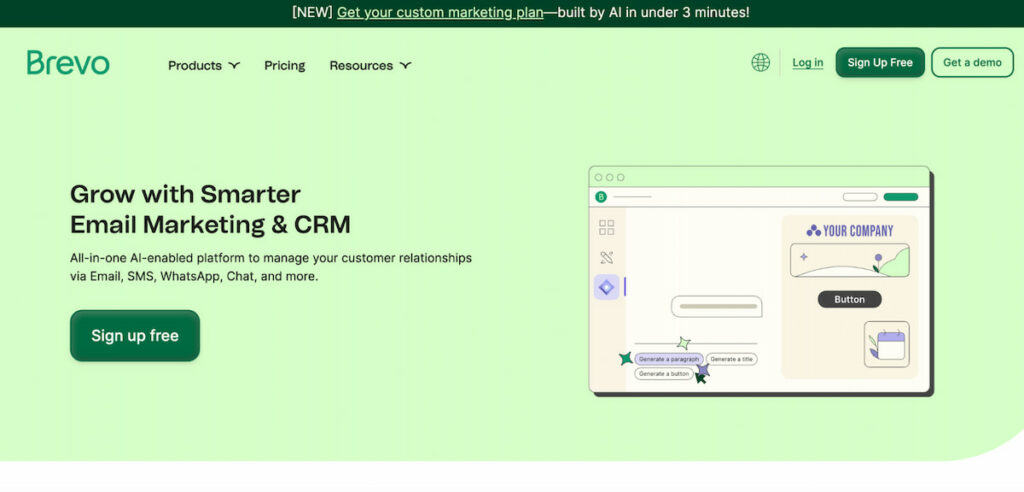
Brevo, formerly known as Sendinblue, is an all-in-one marketing suite with a strong focus on automation, CRM, and transactional messaging. It’s ideal for businesses that want to combine customer management with robust email campaigns. With tools for both marketing and transactional messaging, Brevo is a solid pick for long-term growth. Plus, it handles SMS and chat, too.
Standout Features
Formerly Sendinblue, Brevo has grown into a powerful all-in-one platform:
- Advanced email and SMS automation;
- CRM and sales tools built-in;
- Transactional email features.
Shortcomings
- Interface can feel clunky;
- Email template variety is limited.
Best for
Growing businesses that want email plus CRM without breaking the bank.
Klaviyo
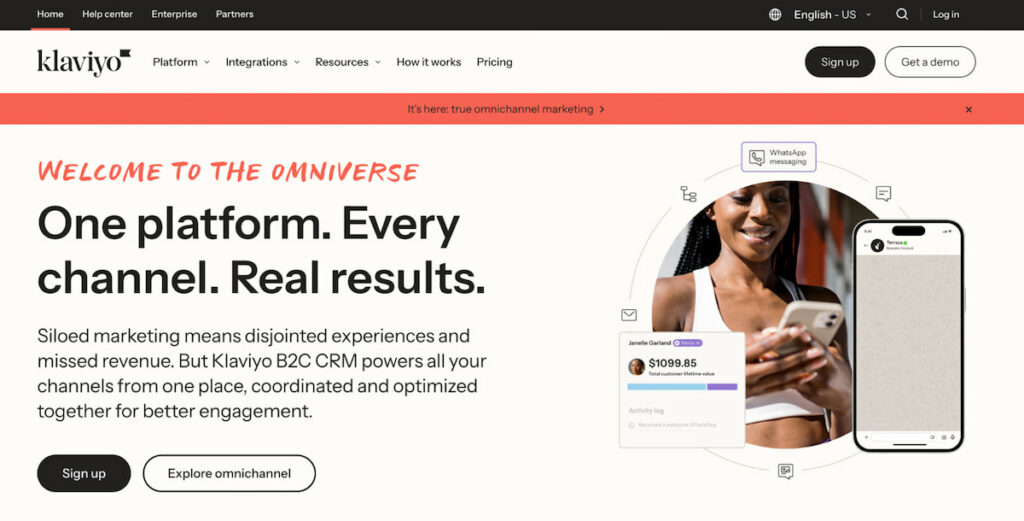
Klaviyo is the go-to platform for data-driven eCommerce email campaigns. It’s built for marketers who want to dig into segmentation and personalization. With deep integrations into platforms like Shopify, it pulls in real-time data to help fine-tune your messaging. If you’re big on analytics and like to test and tweak, this tool is for you.
Standout Features
Klaviyo has carved a niche with data-driven email:
- Deep Shopify and BigCommerce integration;
- Smart segmentation based on real-time data;
- Abuse prevention system that evaluates email campaign content for potential fraud before sending;
- Pre-built templates and flows for lifecycle marketing.
Shortcomings
- Can get expensive as your list grows;
- Not ideal for non-eCommerce users.
Best for
Data-hungry eCommerce marketers who want to personalize at scale.
Mailchimp
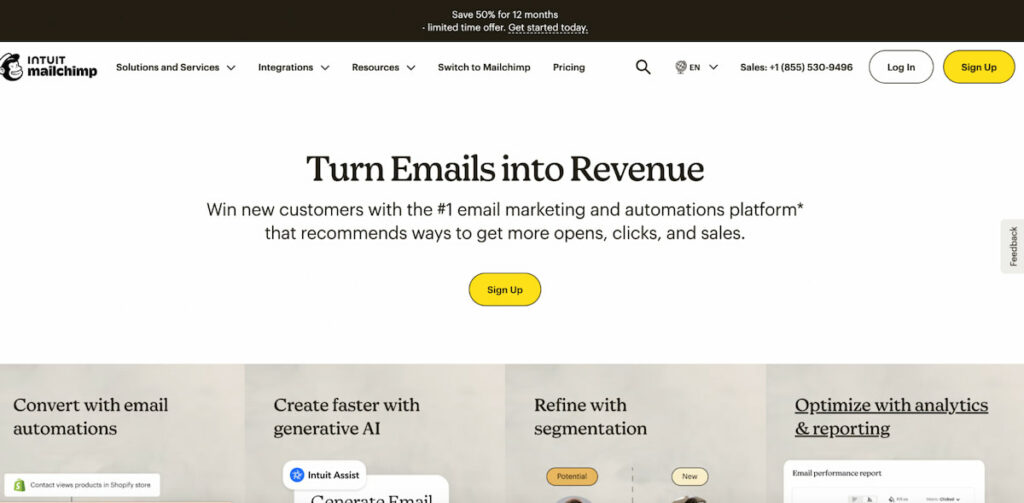
Mailchimp is one of the most recognizable names in email marketing. Known for its ease of use, this email tool is great for getting started and scaling up. It offers a smooth experience for beginners, with lots of pre-built templates and helpful tips along the way. If you want to grow without diving into complexity too quickly, Mailchimp is a safe bet.
Standout Features
The OG of email marketing tools, Mailchimp remains popular:
- Beginner-friendly interface;
- Extensive template library;
- Solid reporting and A/B testing tools.
Shortcomings
- Pricing increases quickly with growth;
- Automation options are not as advanced as others.
Best for
Small businesses and freelancers just starting out.
ActiveCampaign
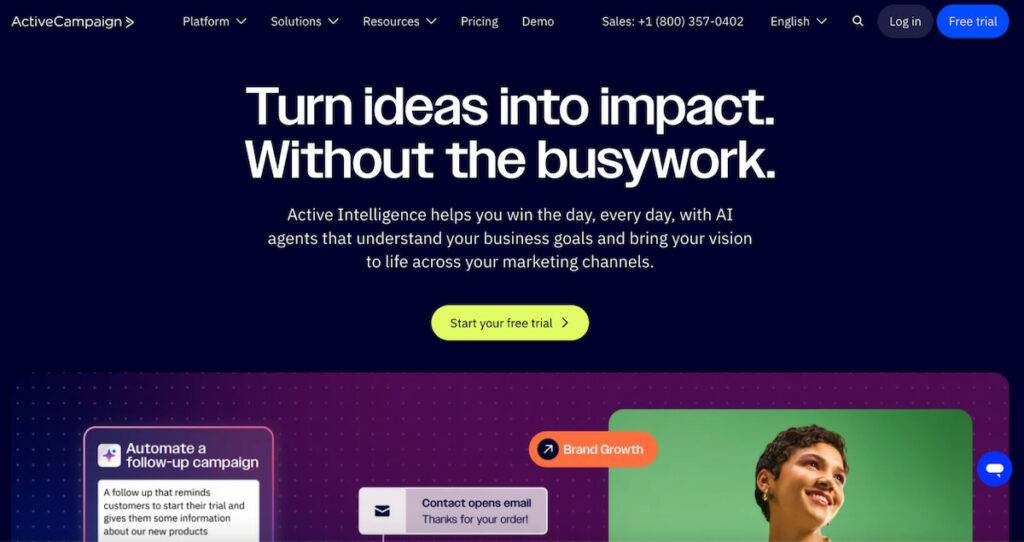
ActiveCampaign is a powerful tool that blends email marketing with sales automation and CRM functionality — ideal for scaling businesses. It’s feature-rich, offering advanced segmentation, dynamic content, and deep automation capabilities. Though it’s not without a learning curve, once you get the hang of it, the tool becomes a central hub for managing the customer journey.
Standout Features
ActiveCampaign offers a lot under the hood:
- Sophisticated automation builder;
- Sales automation and CRM;
- Website tracking and dynamic content.
Shortcomings
- Steep learning curve;
- UI not as modern as competitors.
Best for
Power users and growing teams that want deep automation.
SendX
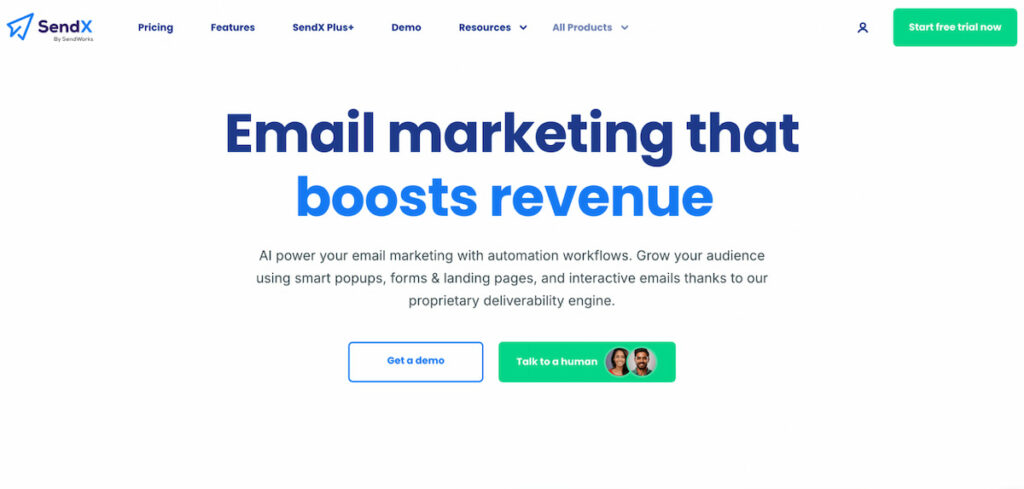
SendX is a feature-rich platform that stands out for its affordability and unlimited email sends, making it attractive for budget-conscious users. It delivers solid performance without a hefty price tag, which makes it great for startups and small teams. The platform’s interface is straightforward, and the heatmap feature gives a nice visual on what’s working.
Standout Features
SendX aims to be powerful yet affordable:
- Unlimited email sends on all plans;
- Heatmap reporting for campaigns;
- One-click resend to unopened emails.
Shortcomings
- Template library is smaller than others;
- Limited third-party integrations.
Best for
Cost-conscious marketers who want bang for their buck.
Constant Contact

A longtime player in the email space, Constant Contact combines event marketing tools with classic email features. It’s designed to help you engage your audience without needing much technical skill. The platform is especially useful for those who run events, webinars, or community outreach. If you’re looking for reliability and ease, this one checks both boxes.
Standout Features
This old-school tool has kept up with the times:
- Real-time email tracking;
- Event marketing tools built in;
- AI content suggestions.
Shortcomings
- Basic automation capabilities;
- Limited customization of workflows.
Best for
Nonprofits, event-based businesses, and beginners.
DRIP

DRIP focuses on advanced marketing automation for eCommerce businesses. It’s designed for those who want more than just basic email blasts. Think of it as a toolkit for building personalized, data-driven journeys that convert. If you’re serious about scaling your store and segmenting your audience with precision, DRIP is worth a look.
Standout Features
Drip positions itself for serious eCommerce players:
- Visual automation builder with branching logic;
- SMS and email combo campaigns;
- Behavior-based segmentation.
Shortcomings
- Higher price point;
- Learning curve for non-techies.
Best for
Online stores ready to scale with personalized messaging.
HubSpot
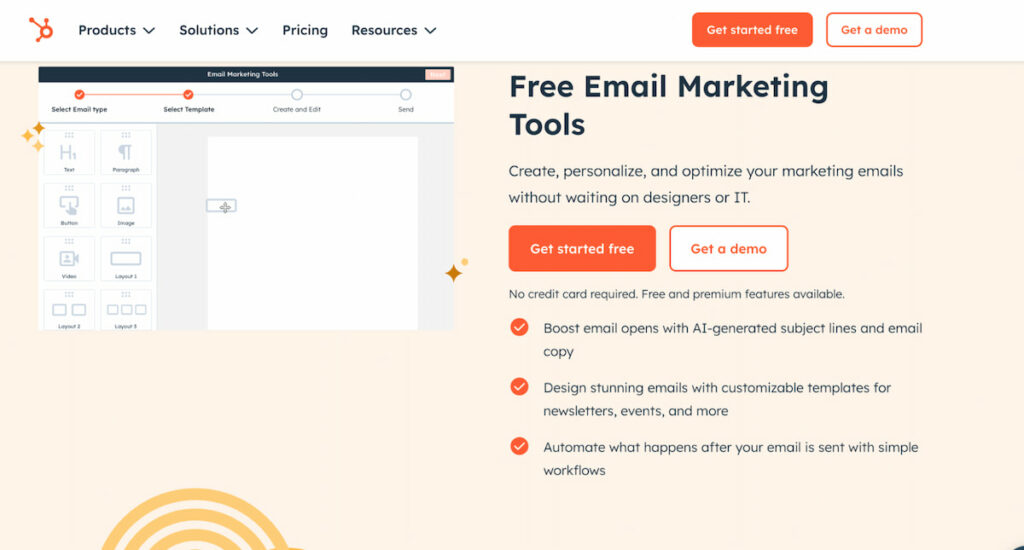
HubSpot’s email marketing capabilities are baked into its larger CRM platform, offering powerful tools for segmentation, personalization, and reporting. It’s a one-stop shop for marketing, sales, and support, all wrapped into one interface. While it’s more than just email, that’s what makes it powerful—everything works together.
Standout Features
HubSpot’s email tools are part of a bigger picture:
- Seamless CRM integration;
- Smart personalization with contact data;
- TLS encryption for emails in transit;
- Drag-and-drop builder with smart content.
Shortcomings
- Can be pricey as you grow;
- May be an overkill for small teams.
Best for
Teams already using HubSpot or wanting an all-in-one CRM + email platform.
GetResponse
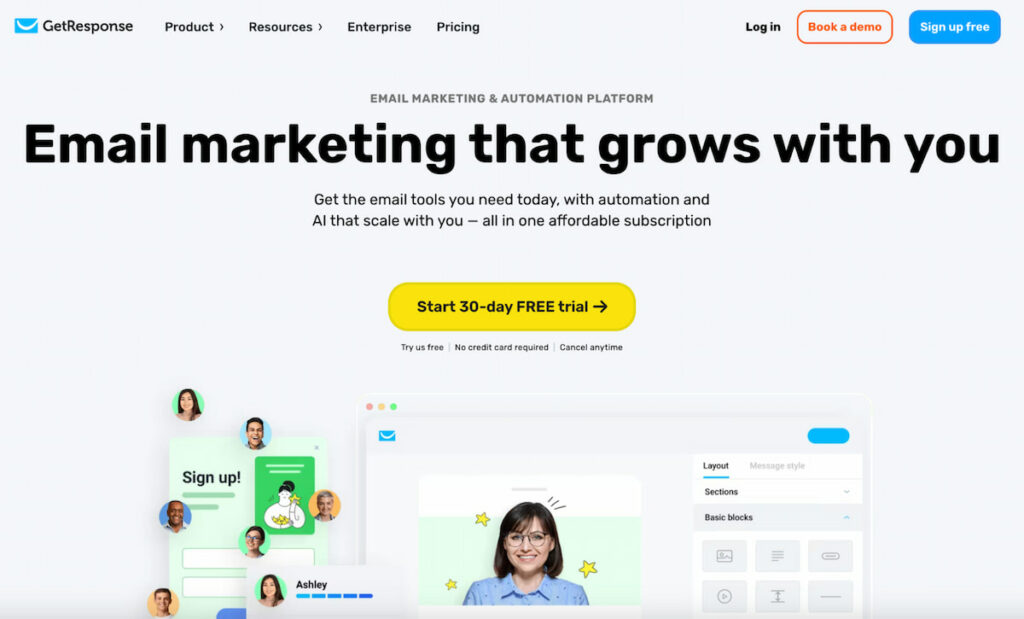
GetResponse is a full-suite marketing tool with strong support for email, landing pages, and webinars – perfect for lead nurturing. It’s great for marketers who run full campaigns, not just newsletters. The funnel builder is especially useful for turning leads into customers through a guided experience. If you need more than email in one place, GetResponse delivers.
Standout Features
GetResponse combines email with other marketing needs:
- Landing page and webinar tools;
- Advanced autoresponders;
- Conversion funnel builder.
Shortcomings
- Interface can feel outdated;
- Some features are locked behind higher-tier plans.
Best for
Content marketers and educators who run webinars or funnels.
EmailOctopus
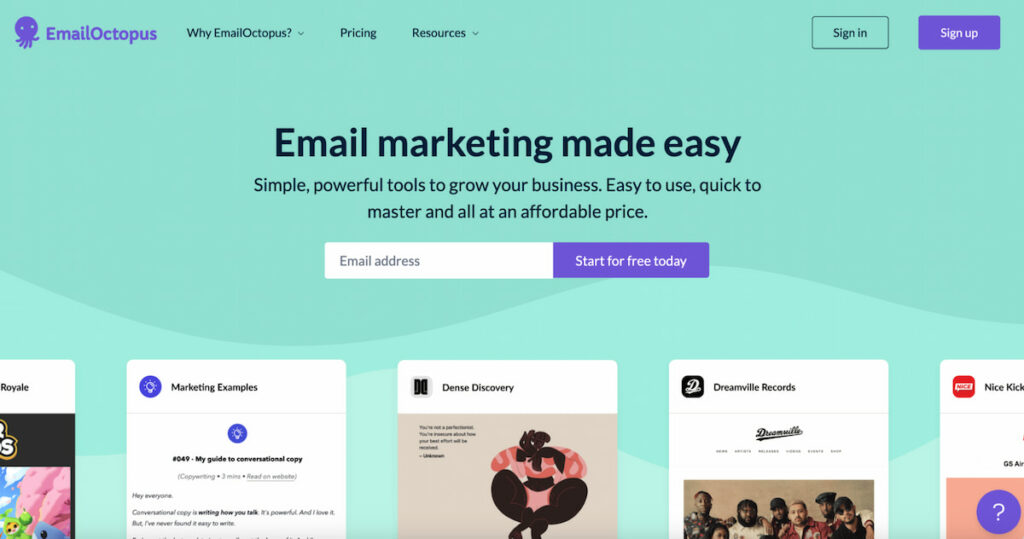
EmailOctopus is a lightweight and wallet-friendly solution ideal for creators and small businesses that need basic, effective email campaigns. It’s simple, efficient, and hooks into Amazon SES for high deliverability at low cost. You won’t find fancy automation here, but for straightforward emailing, it does the job.
Standout Features
A budget-friendly Mailchimp alternative:
- Simple email builder;
- Amazon SES integration for cheap deliverability;
- Easy subscriber management.
Shortcomings
- Fewer features compared to premium tools;
- Limited automation capabilities.
Best for
Startups and bootstrapped creators, needing basic email campaigns.
Kit
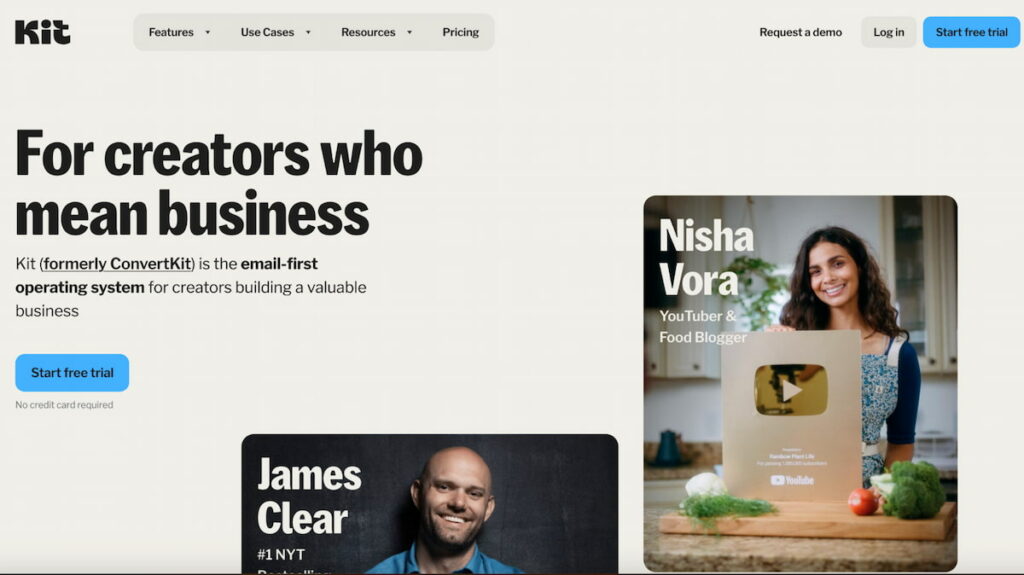
Kit is an AI assistant that helps Shopify store owners run simple marketing tasks, like sending product emails and managing Facebook ads. It acts more like a helper than a platform, nudging you to take smart actions. From writing emails to posting on social media, Kit saves you time and brainpower. It’s ideal for solo shop owners who need a little extra marketing muscle.
Standout Features
Kit is less of a traditional tool and more of a virtual marketing assistant:
- AI-driven suggestions for emails and social posts;
- Integration with Shopify;
- Auto-send thank-you and product review emails.
Shortcomings
- Narrow focus on eCommerce;
- Not customizable for other industries.
Best for
Shopify store owners who want a hands-off marketing sidekick.
AWeber
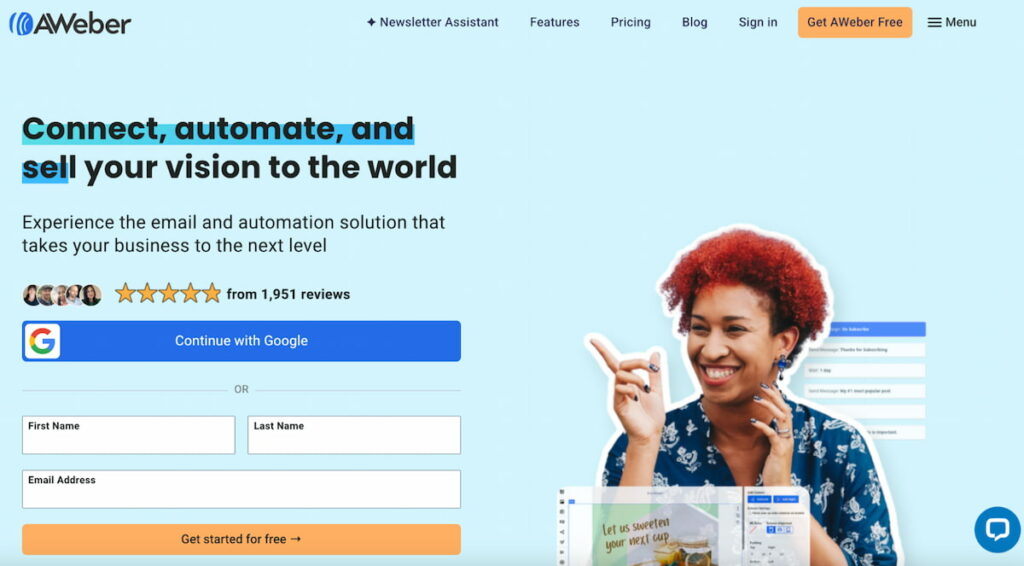
AWeber has been around for decades, offering a no-frills solution for businesses who want reliable deliverability and quick campaign setup. It’s a dependable platform with solid customer support and high inbox placement rates. While it may lack the flash of newer tools, it gets the basics right. If you want a platform that just works, AWeber fits the bill.
Standout Features
AWeber has been around for a while and still holds its ground:
- Simple autoresponders;
- AMP for email (interactive emails);
- Strong deliverability reputation.
Shortcomings
- UI feels a bit dated;
- Lacks deeper automation options.
Best for
Small businesses and solopreneurs who value reliability.
Beehiiv
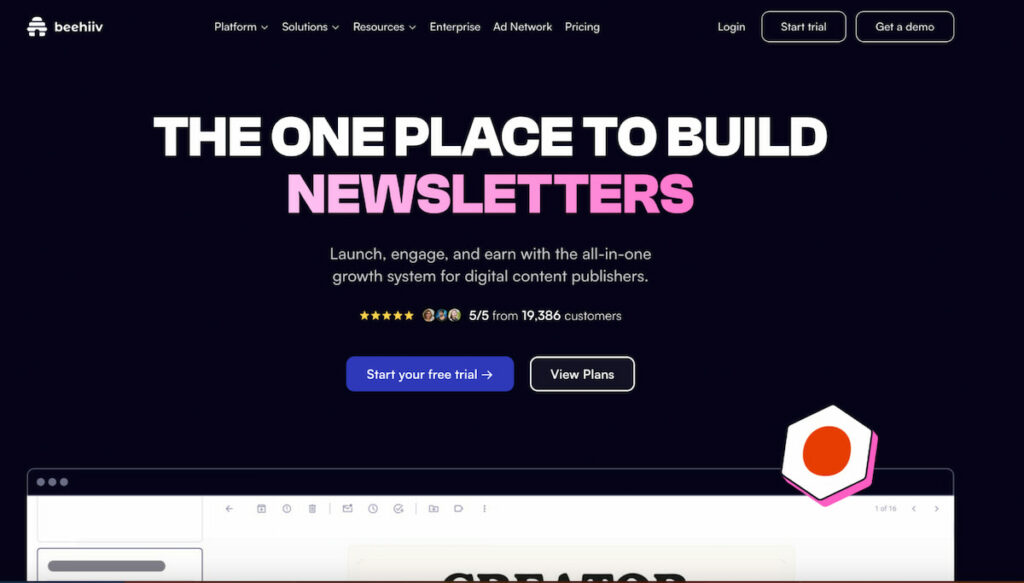
Beehiiv is a modern platform designed for newsletter creators, offering beautiful templates and monetization tools to help you grow your audience. It’s tailored for writers and publishers who want to grow and engage their subscriber base. The platform makes it easy to set up paid newsletters and referral programs. If content is your product, Beehiiv is what you need.
Standout Features
Beehiiv is made for newsletter creators:
- Beautiful newsletter templates;
- Monetization features (like paywalled content);
- Growth tools like referral programs.
Shortcomings
- Not designed for general marketing campaigns;
- Limited integrations.
Best for
Newsletter writers, bloggers, and creators building subscriber communities.
Email Safety and Smart Practices
When choosing or using any email platform in 2025, security should be top of mind. With phishing scams and email fraud on the rise, the right tool should help protect both your business and your subscribers. Many platforms now offer features like domain authentication, spam testing, and compliance with GDPR and CAN-SPAM regulations.
For businesses handling sensitive customer data, implementing encrypted email services can add an extra layer of protection. These services ensure that even if an email is intercepted, its contents remain unreadable to unauthorized parties.
It’s also wise to be aware of disposable email addresses. While they can be useful for quick signups, they often clutter your list and affect deliverability rates. A good email platform should help you identify and manage such addresses to keep your list clean.
What to Look for in an Email Tool?
Not all email tools are created equal. If you want to find the right tool for your needs, there are a few things you should keep an eye on. First things first, it’s the ease of use. If it takes you hours to figure out how to send a simple campaign, it’s probably not the tool you need.
Secondly, it’s automation. Does the email tools allow you to set up workflows like welcome emails, cart recovery, or follow-ups without needing a developer? If you feel like there’s a learning curve there, and getting the knack of the functionality will take you a long time, it will make sense to look in another direction.
It might make sense to look in another direction—or even explore how to build AI chatbot solutions that streamline these tasks.
Emails don’t necessarily have to have fancy templates, but if you’d like to stand out and keep your brand sharp, good-looking templates will be an added bonus.
Next, a good email tool should allow for integrations with your website, CRM, and eCommerce platforms. For dropshipping businesses, seamless integration with store platforms and fulfillment tools is especially crucial to keep operations efficient. Furthermore, it would not go amiss to check if the tool offers built-in protections against phishing and spoofed emails — especially for businesses handling sensitive customer data. These features help protect your brand reputation and reduce risks from fraudulent messages.
Last but not least, it’s deliverability. At the end of the day, if your emails don’t reach inboxes, what’s the point of using an email tool in the first place?
What Makes a Good Free Email Software?
A solid free plan isn’t just about price — it’s about value. Here’s what to look for:
- Generous contact limits;
- Decent send volume;
- Access to templates, basic automation, and reporting;
- No ugly branding.
Wrapping Up
Whether you’re running a sleek Shopify store, managing a nonprofit newsletter, or just getting started with email marketing, there’s something on this list for you. Take your time, try a few out, and don’t be afraid to switch if something doesn’t feel right. After all, your email tool should work for you — not the other way around.